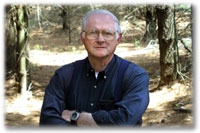With another year ending, I’m sorry to report that this will be my
last column. It was a difficult decision
to make, as I have been writing columns nearly every year since 1957. In that year I began work as a County
Extension Agent in Green Lake County and wrote columns about Extension
activities for the Berlin Journal. In
1960 I moved to Green Bay and worked there as an Extension Agent, writing
columns for the Green Bay Press Gazette.
Ray Pagel was Farm Director for the paper at the time. He would have made a good English teacher,
for with a red pen he took my columns apart and showed me how to make them
better. He showed me how to say
something with 500 words or less. For his patience and instruction, I am
forever grateful.
In 1962, I moved to Madison to become Publications Editor for the
State 4-H Department, editing all the many 4-H bulletins that went out by the
thousands to 4-H member around the state.
Bulletins that ranged from how to raise a dairy calf, to tips for sewing
and canning. I had no time for column
writing, indeed no time for any of my own writing.
By 1964, I was teaching in the Department of Agricultural and Extension
Education in UW-Madison’s College of Agriculture and married with three little
kids. Learning a new job, and helping
take of my family left little time for column writing. Glen Pound, then Dean of the College of Agriculture
said I must earn an advanced degree before he could increase my salary. So, in 1966, I was a full-time in graduate
school, learning the nuances of academic writing, which was informative, well
researched, and often without much heart.
In 1966, in addition to my academic writing, I began writing a weekly
column titled “Outdoor Notebook” for the Waushara Argus in Wautoma, and
soon also for the New London and Hortonville papers as well as The Central
Wisconsin Resorter. I wrote for
these papers for ten years. A bit later
I wrote weekly columns for the Country Today, and Agriview
newspapers. And for the past few years,
I wrote “Sit Awhile” for the Wisconsin State Farmer. I have also written this column for the past
15 years as both a blog and an entry on my Facebook Page.
I’ve learned much from my many years of column writing. I’ve learned
the power of a story. I have learned
that putting a little heart into a story will often take it from ordinary to something
better. I have worked hard to do that. A little humor helps too. I write with the hope my words will get
people thinking, and perhaps remembering.
Memories are powerful tools to make a life more interesting.
I know I will miss reading all the comments and stories that my
columns have evoked. Thank you everyone for reading my words. I plan to continue to write books and do TV
and radio work, and perhaps write a few articles.
THE OLD TIMER SAYS. Thank you. Without readers, where would writers be?
UPCOMING EVENTS:
Saturday, January 7, 2023, 1:30
p.m. Patterson Memorial Library, Wild
Rose, Wisconsin. Presentation on my
newest book: More than Words. That book
and others will be for sale and signing.
I plan to be there in person.
WHERE
TO BUY MY BOOKS (Including my newest one). As you all know, books make
fine presents. See my website, www.jerryapps.com, for a listing of my books. Buy
my books from your local bookstore,
or buy online from the Wisconsin Historical Society bookstore, https://shop.wisconsinhistory.org/books, bookshop.org, or purchase from the Friends of the Patterson
Memorial Library in Wild Rose—a fundraiser for them. Phone: 920-622-3835 for
prices and ordering, or contact the librarian: barnard@wildroselibrary.
Patterson Memorial Library
500 Division Street
Wild Rose, WI 54984.
www.wildroselibrary.org
If you live in the
western part of the state, stop at Ruth’s home town, Westby, visit Dregne’s. and look at their great selection of my
books. Order a book from them by calling 1-877-634-4414. They will be happy to
help you. If you live in northcentral
Wisconsin, stop at the Janke bookstore in Wausau (phone 715-845-9648). They also have a large selection of my
books.





.jpg)


.jpg)
